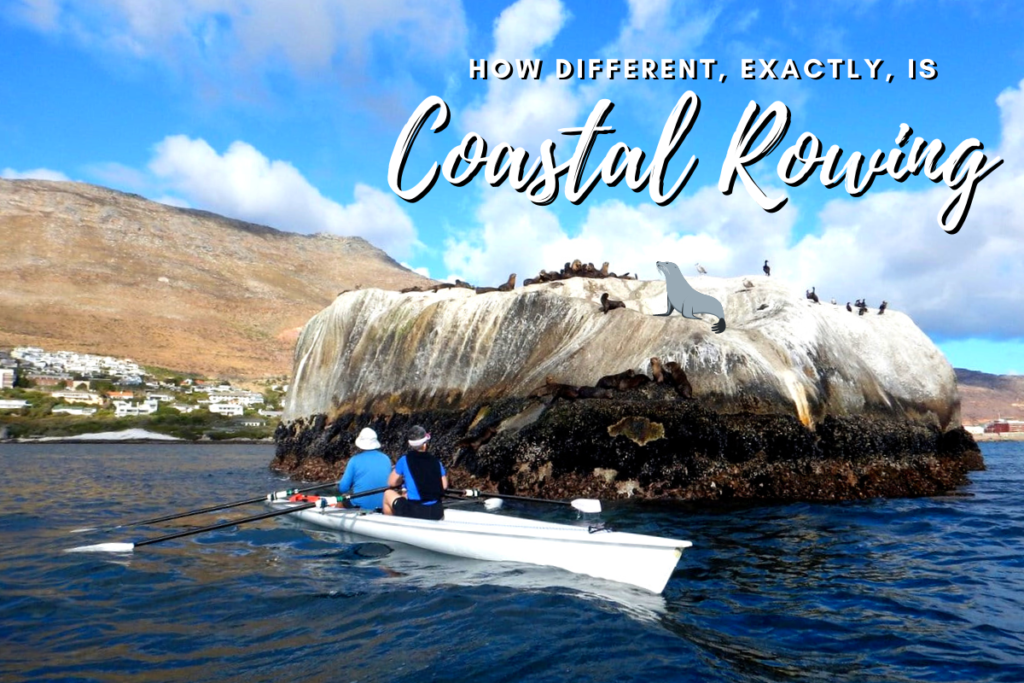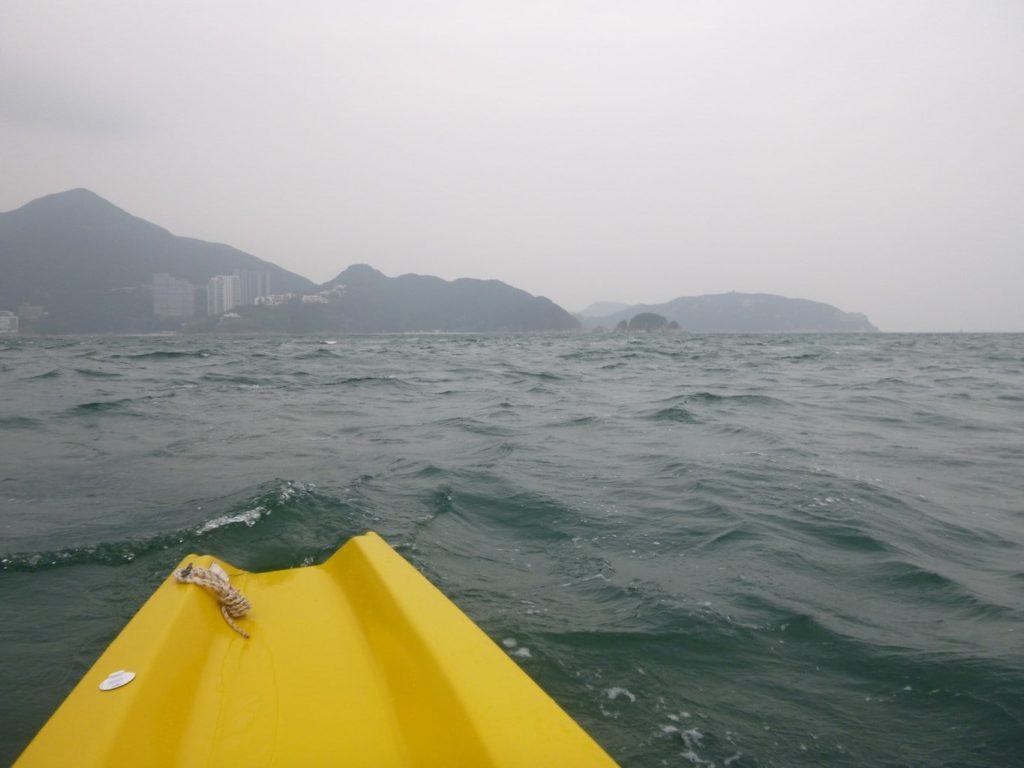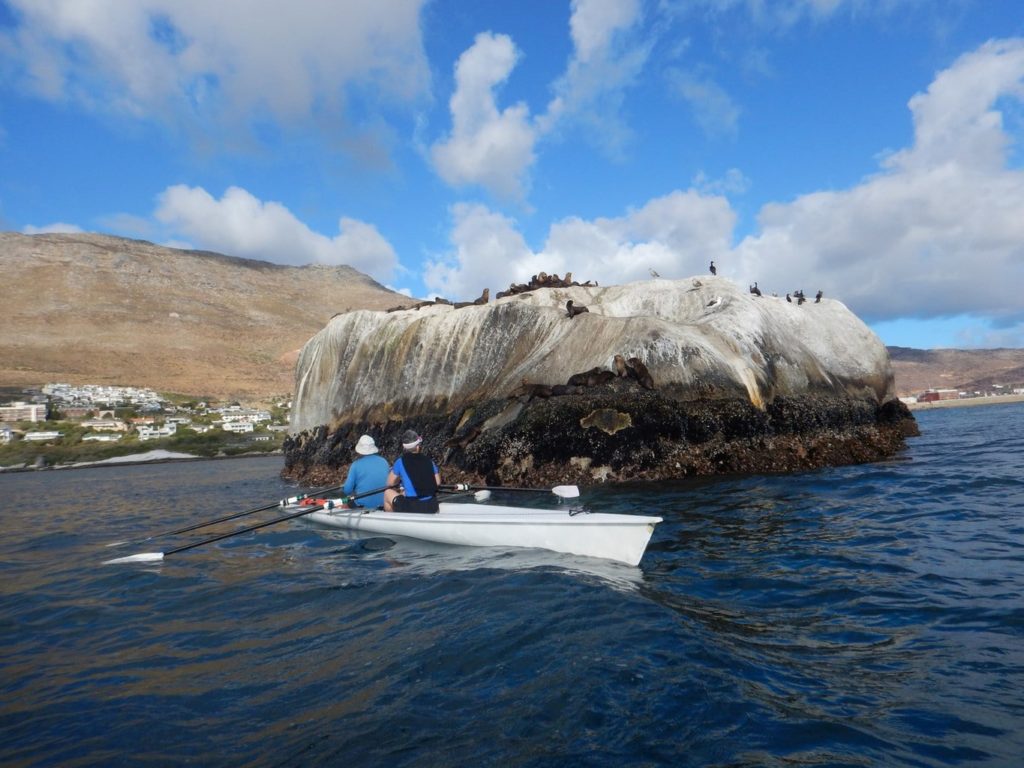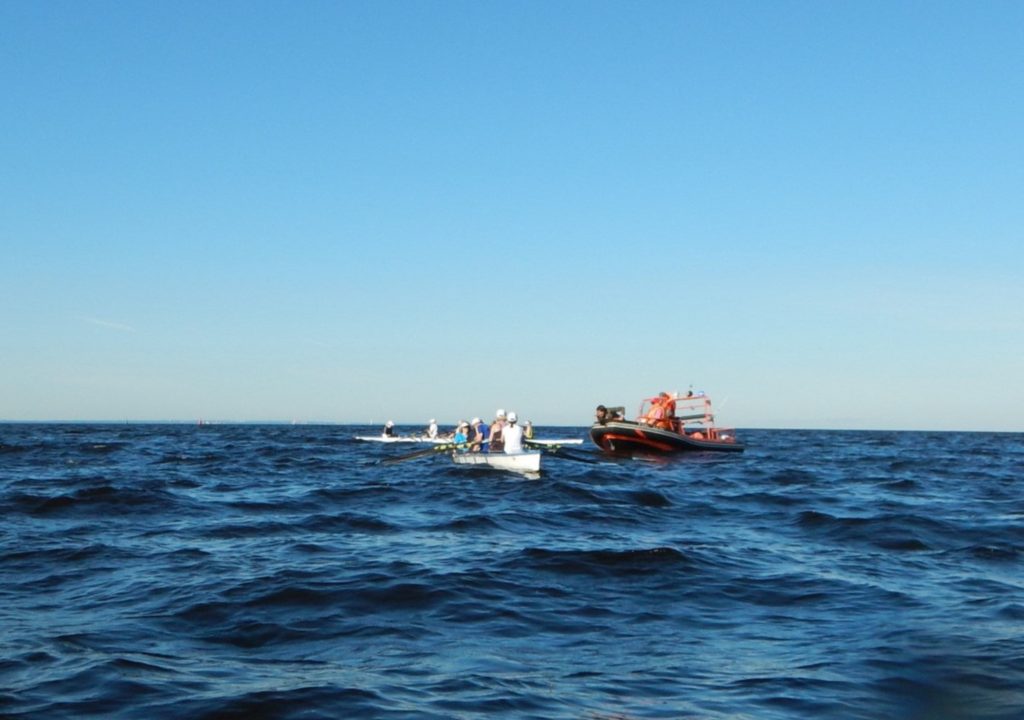
How Different, Exactly, is Coastal Rowing?

You are a flatwater rower intrigued by coastal rowing. What is this mountain biking of rowing? Swedish Olympic rower Lassi Karonen who rowed at the 2013 World Rowing Coastal Championships is quoted on the World Rowing website: “The similarity (with flat-water rowing) is the movement of the stroke, everything else is different.” So, exactly, what is different?
If you are rowing coastal boats on a freshwater lake with no wind and waves, there is little difference, just that the boats are heavier. On the sea you have tides and currents to deal with, along with waves. Waves can also be significant on lakes and rivers, especially when wind is pushing against a strong current or stream. These are the conditions when coastal boats not only come into their own, but the rowing technique shifts.

There are relatively few authoritative sources on coastal rowing technique. Below are some pointers based on conversations with coastal rowers, internet research and my own experience. I am not an expert, so these tips are shared in the spirit of discovery and learning. I welcome comments and input.
- Being relaxed is very important. You need to feel the water and adjust each stroke to the conditions.
- Constantly adapt to wind, waves and current.
- Keep the blades in the water, let the boat follow the wave and don’t fight the sea.
- Different hand heights are possible and often needed to keep the blades in the water.
- Have a soft catch and apply power mid-stroke, once you have the feel of the water and connection to it.
- Shorten the slide as needed, and row more upright. Seek stability, not reach. Get speed from the leg drive, not stroke length.
- Ensure a clean release and don’t wash out at the end of the drive – get the blades out square and quickly so they do not get caught in the waves.
- When it gets rough, get about 20cm of horizontal hand separation. Practice leading with different hands.
- A faster slide helps in rough conditions by minimizing the time that you are least stable and the risk of blades flopping about in wind and waves.
- Rate 22 rather than 18, keep up the momentum.
- Keep rowing. Steering the boat, especially a quad, needs propulsion. If rowers stop rowing because waves crash in, then the boat will really get into trouble.
In addition to these basics of the stroke, there is a lot to learn about rowing in waves, reading and adjusting for current, beach launches and landings and figuring out how to actually surf! We will save that for another blog post, and will consult with some experts for advice. In the meantime, here are a few sources of advice:
- https://www.youtube.com/watch?time_continue=1&v=WMfqQdhIAiw
- https://www.scribd.com/document/256262941/Notes-on-Coastal-Rowing-What-Why-and-How
- http://www.carolineroberts.co.uk/wp-content/uploads/2012/06/A_pinch_of_salt.pdf
- https://rebelrower.com/blog/

One final thing, many flatwater rowers row with PDFs (personal floatation devices). FISA racing rules require life jackets to be in the boat – which is defined as having enough floatation that will allow a person to float unaided face upwards. Be safe when exploring coastal waters.
Give coastal rowing a try. Enjoy! It is the same, yet different and a lot of fun.
This is the fourth in our series on coastal rowing. Past posts: Why All Rowers Should Care About Coastal Rowing; The Case for Coastal Boats on Lakes; Is the Tide Rising for Coastal Rowing? Watch for more blogs on this subject.
Ruth, thanks for sharing your tips and experiences! Having rowed our 14′ and 17′ Whitehalls in a lot of different open water conditions, I can completely relate to many of the points you make, especially about relaxing your stroke and feeling the water and waves beneath you. I did a row camping expedition in the Gulf Islands with plenty of gear aboard – a whole different challenge from flat water rowing. Cheers, Michael
Hi Michael,
Thanks very much for your comment. Wonderful. You do have a lot of experience. A rowing trip in the Gulf Islands is definitely something that I would like to do some time, maybe with guests! Coastal is fun, isn’t it?
Cheers,
Ruth
Dear Ruth,
Your coastal rowing consultant is spot on with the technique requirements as you will concur after you rowed in False bay. I would only add that coastal rowing responds to, and generates, very good rowing technique. Boat propulsion is all about HORIZONTAL movement of body and blades, shoulder swinging and lifting hands cause a loss of “connection” between blade and water allowing the elements to destabilize the boat more easily.
Just completed an incredible 10 day adventure with Oldenburg Rowing Club from Germany, Berg river into St Helena Bay, Langebaan lagoon, Table Bay to Robben Island and several rows in False Bay.
Jorg Dickbertel has posted a report in ” Rudersport ” and there are some pictures on the Cape Coastal Facebook site.
We used our 2 youlets 5 Doubels and 4 sculling boats to accommodate all the rowers.
Very best regards
Derrick
Dear Derrick,
Lovely to hear from you and thank you for your comments. Rowing on False Bay and elsewhere in South Africa indeed is wonderful. Very happy to hear that Oldenburg RC had an excellent tour with you.
Kind regards,
Ruth
Surfing is certainly possible in welsh celtic longboats, as long as the stroke can take the lead and that the cox is BRAVE!
The Stroke informs crew of a good wave approaching, increases stroke rate to catch the wave, then really sensitive reactive strokes to keep with the wave.
You need a good crew to suceed, one used to rowing together, a crew that reacts quickly to small changes in stroke rate/strength. It is possible to get a longboat plaining with a wave in the right conditions.
Hi Catrin. Sorry for the delay in replying. I have been busy travelling and rowing! Your description is delightful – very evocative. I was recently in Co. Cork, Ireland and surfing waves on the Atlantic, but in a coastal double. A Welsh celtic longboat must be a completely different matter! Yes, I can well imagine that it would require skill, coordination and yes, bravery. Thank you for sharing. Best, Ruth
[…] How Different, Exactly, is Coastal Rowing? […]